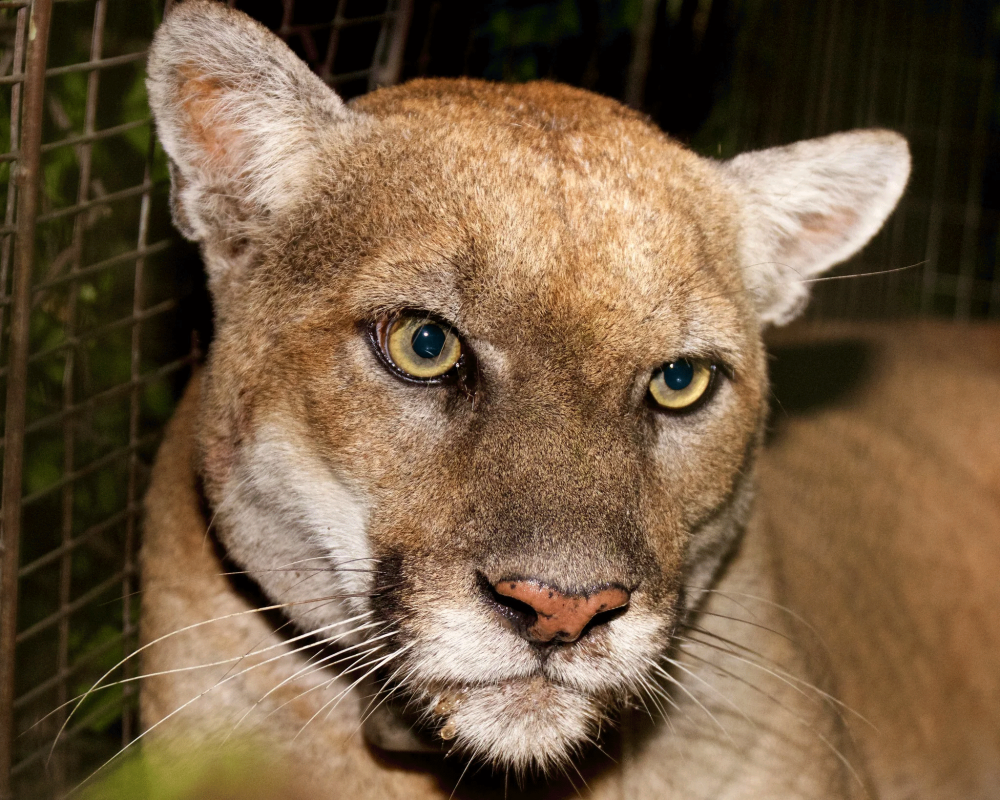
Mountain Lion Mortality Maps Show Rough Road for Cougars
As LA Celebrates the Life of Beloved P-22, Maps Show Death Tolls for Lesser-Known Lions
As Los Angeles prepares to celebrate the life of beloved mountain lion P-22 this weekend, mountain lion mortality maps from the University of California, Davis, show that many cougars suffer similar fates along California’s roads and highways.
The maps and accompanying report, created by the UC Davis Road Ecology Center, reveal that one or two mountain lions were killed every week on California roads and highways between 2015 and 2022.

That number has decreased gradually over the past seven years, although whether that is due to declines in the mountain lion population itself or other factors is unclear. A statewide mountain lion population estimate is currently pending, and scientists are working on survival estimates to illuminate these questions.
“We do know that, over time, extra mortality from cars, especially for small, isolated populations, adds significantly to the threats they already face,” said Fraser Shilling, director of the UC Davis Road Ecology Center. “The tenacity of P-22 in life and the final tragedy of his death from a vehicle collision highlights the plight of mountain lions throughout California, constantly under threat from traffic while living their natural lives.”
Dangerous places for lions
The maps show that Southern California and the Bay Area host the most dangerous roads for mountain lions, with local extinction becoming more likely each year. Particularly problematic highways include:
- I-280, south of San Francisco
- I-15, south of Temecula
- I-5 in Siskiyou County
- SR 74 (Ortega Highway) in the Santa Ana Mountains

Mountain lion expert Winston Vickers, a UC Davis School of Veterinary Medicine wildlife veterinarian, contributed data used in the maps’ creation.
“Regionally, parts of Southern California are especially dangerous for mountain lions, with traffic being the primary cause of death,” Vickers said. “In other areas, direct conflict with livestock results in mountain lions being killed. The two together are clearly bad, especially for small, isolated populations. Busy freeways also cut off mountain lions from potential mates, severely decreasing their genetic diversity and threatening their existence.”
P-22: Hollywood legend
P-22 was a wild mountain lion who became a Hollywood legend. He lived most of his 12 years in Griffith Park, where his image was famously captured walking beneath the Hollywood sign.
Throughout his life, he evaded traffic, becoming the first known mountain lion to successfully cross the 405 and 101 freeways before settling in Griffith Park. There, he was cut off from other mountain lions that might continue his legacy.
Instead, his life became a symbol of the need for wildlife crossings and a reminder of wildness in even the most urban settings. His captivating face and story helped raise funds for the world’s largest wildlife overpass — the Wallis-Annenberg Wildlife Overcrossing — which broke ground last April to create a corridor between the Santa Monica mountains and areas to the north.

P-22 was hit by a vehicle in December 2022. Already weakened before the collision by old age and other illnesses, he was euthanized on Dec. 17 because of health issues including kidney and heart disease, chronic weight loss and a parasitic skin infection.
The public “P-22 Celebration of Life” is being held Saturday, Feb. 4, in Los Angeles at the Greek Theater in Griffith Park.
Another mountain lion
On Sunday, Jan. 22, another wild mountain lion, P-81, was found dead from a possible vehicle strike on the Pacific Coast Highway in the western Santa Monica Mountains.
“Mountain lions in Southern California symbolize the capacity of America’s lion to thrive, even in our largest megacities,” said Mari Galloway, California program director for Wildlands Network. “But to discover yet another mountain lion killed by a vehicle as we prepare for P-22’s memorial demands us to confront whether we are doing enough for our wild neighbors.”